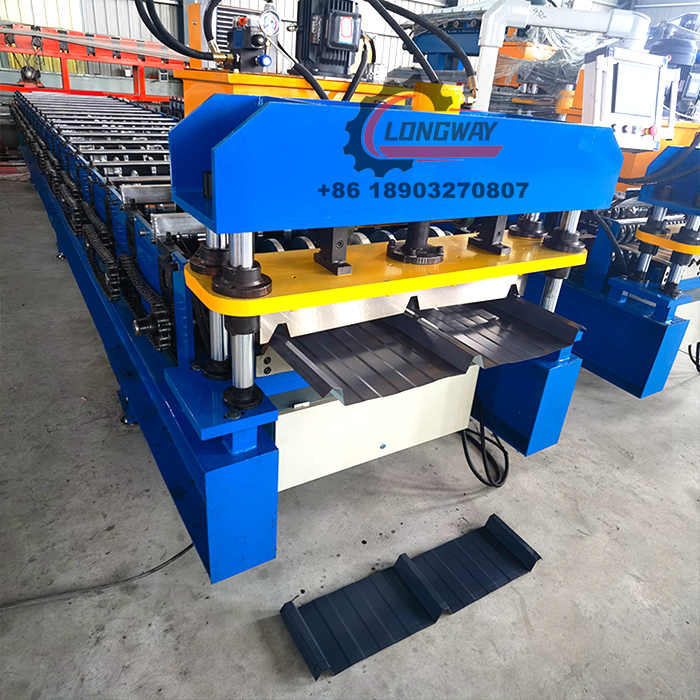Advanced Metal Roll Forming Machines for Efficient Sheet Processing and Production
Metal Roll Forming Machines An Overview
Metal roll forming machines are sophisticated pieces of equipment designed to create specific metal shapes from flat sheets of metal. They work by feeding a continuous strip of metal through a series of rollers, which progressively shape the material into the desired profile. This technology is widely utilized across multiple industries, from construction to automotive manufacturing, due to its efficiency, accuracy, and versatility.
The Basics of Roll Forming
The roll forming process begins with the selection of the appropriate metal material, typically steel, aluminum, or copper. The metal strip is fed into a series of rollers that are precisely engineered to gradually alter the shape of the metal. The rollers are set in a sequence, each designed to impart a specific curvature or angling to the strip. The continuous nature of the operation allows for longer runs and large production volumes, making it an ideal choice for creating components like roofing panels, gutters, structural beams, and more.
One of the key advantages of metal roll forming is its ability to create intricately shaped profiles without producing any waste material. Unlike other metal forming processes, such as stamping and cutting, roll forming utilizes the entire strip, ensuring that every part is utilized efficiently. This not only reduces material costs but also maximizes productivity.
Types of Roll Forming Machines
There are several types of roll forming machines, each designed for specific applications. Some common configurations include
1. Thin Metal Roll Forming Machines These machines handle lighter, thinner materials and are often used for producing smaller, intricate profiles for applications like detailing and trim.
2. Heavy-Duty Roll Forming Machines Designed to manage thicker materials, these machines are built for durability and can produce larger, heavier components used in construction and structural applications.
3. Custom Roll Forming Machines Many manufacturers also offer custom roll forming solutions tailored to meet the specific needs of different industries. This includes machines that can produce unique shapes or incorporate additional features such as punching or welding within the same process.
Advantages of Metal Roll Forming Machines
metal roll forming machine

1. High Efficiency Roll forming enables continuous production, which significantly reduces cycle times. This efficiency translates into lower labor costs and higher output.
2. Cost-Effectiveness Due to the minimal waste generated and the ability to produce high volumes of product quickly, roll forming is a cost-effective method for metal component manufacturing.
3. Consistency and Precision The use of advanced technology and CNC (Computer Numerical Control) systems allows for precise dimensional control and the consistent quality of the end product.
4. Versatility Metal roll forming machines can produce an array of profiles and shapes suitable for various applications. The ability to switch between different profiles makes them adaptable to changing production needs.
Applications of Metal Roll Forming Machines
The applications of metal roll forming are vast. In the construction industry, the machines are used to create components such as
- Roof panels - Wall cladding - Ceiling channels - Rainwater systems (gutters and downspouts)
In the automotive sector, roll forming machines produce structural components, trims, and even chassis parts. Additionally, within the appliance industry, they create parts for refrigerators, ovens, and washing machines.
Conclusion
In summary, metal roll forming machines play a pivotal role in modern manufacturing. Their ability to produce high-quality, customizable metal products at an efficient rate makes them indispensable in various sectors. As technology continues to evolve, the capabilities of these machines are likely to expand, further enhancing their efficiency and broadening their applications. For businesses looking to streamline their production processes while maintaining quality, investing in advanced metal roll forming technology is certainly a wise move.
-
Roof Panel Machines: Buying Guide, Types, and PricingNewsJul.04, 2025
-
Purlin Machines: Types, Features, and Pricing GuideNewsJul.04, 2025
-
Metal Embossing Machines: Types, Applications, and Buying GuideNewsJul.04, 2025
-
Gutter Machines: Features, Types, and Cost BreakdownNewsJul.04, 2025
-
Cut to Length Line: Overview, Equipment, and Buying GuideNewsJul.04, 2025
-
Auto Stacker: Features, Applications, and Cost BreakdownNewsJul.04, 2025
-
Top Drywall Profile Machine Models for SaleNewsJun.05, 2025








